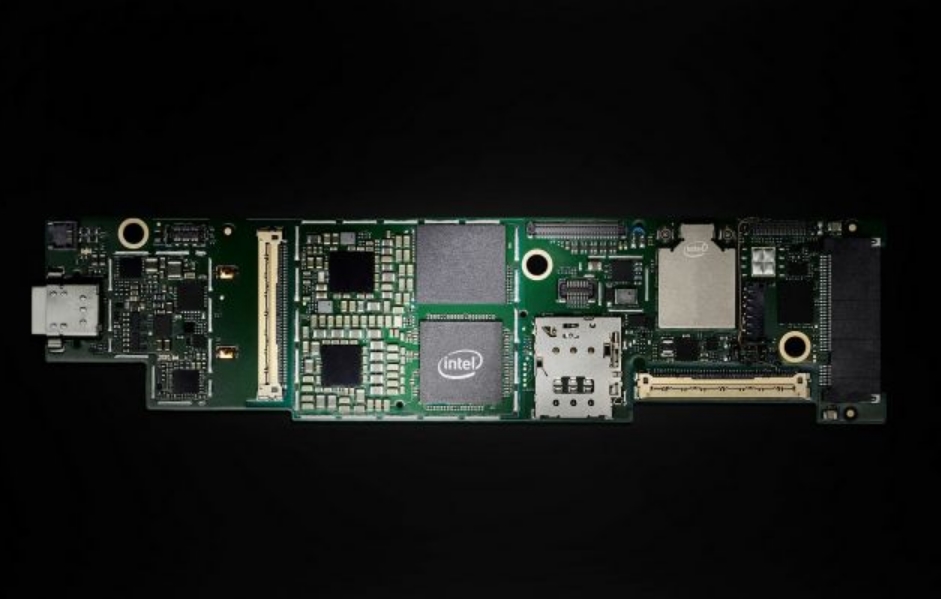Intel announced the Lake 3D '3D' chip for folding screens and ultra-thin laptops
After years of speculation, Intel officially launched Lakefield processors on Wednesday - these are the first chips to bring its Core i3 and i5 hardware together and use Atom cores. "Tremont" with low power use. The official name of these processors is "Intel Core processors with hybrid technology". The company sees Lakefield as the ideal hardware for ultrathin laptops, like the Samsung Galaxy Book S, as well as foldable laptops like the ThinkPad X1 Fold and dual-screen devices like the Surface Neo.
According to Intel, i3 and i5 "Sunny Cove" hardware manufactured on 10nm processes will handle heavy-duty tasks, while less-demanding tasks will be transferred to Atom cores, compatible similar to the "big.Little" layout that Qualcomm often uses. And unlike the Snapdragon 8cx chipset for laptops, which are restricted to ARM-only applications, Lakefield processors will be able to run any 32-bit and 64-bit Windows software. A Lakefield chip can technically fix all the problems we're having on the Surface Pro X: this expensive tablet can't run every application the user wants!

Intel can combine many chip and onboard memory architectures into a single processor thanks to its Foveros 3D packaging technology. This technology allows them to build multiple logic boards and memory modules on top of each other, instead of spreading them out on a 2D flat circuit board like traditional microprocessors. And with this method, Lakefield chips will not take up much physical space, making them ideal chips for ultra-thin devices.
According to Ram Naik, senior product manager of Intel's Client Computing Group, " I think in the near future, when we introduce it (Foveros 3D) on Intel Core processors with Hybrid Technology, we will get huge benefits in terms of single stream performance thanks to Sunny Cove, and as a result, we will be able to get pretty good feedback. benefit to consumers ".
Lakefield processors launched this time have 2 5-core processors (one i3 or i5 core and four Atom cores) using 7-watt thermal design profile. The i5-L16G7 processor is clocked at 1.4GHz and can reach 3GHz on one core, or 1.8GHz on all cores. The i3-L13G3 processor is clocked at 800MHz and has a single core turbo speed of 2.8GHz. Both of these chips will be powered by Intel 11th-generation graphics chips which, according to the company, are 1.7 times faster than the low-power Core i7-8500Y CPU. Intel says it will use either 4GB or 8GB LPDDR4X RAM - depending on the manufacturer.

Obviously, these new processors will not be "speedy", but they are evidence of how Intel is pursuing new chip designs. Although AMD has moved to 7nm designs with CPUs and GPUs without a problem, Intel still has a hard time abandoning its aging 14nm architecture. Intel's first 10nm chips, Ice Lake CPUs launched last year, had impressive performance - but the company still had to depend on the 14nm design for more powerful 10th-generation CPUs. That's why new 3D chips are of particular importance: they will open Intel a path to innovation even as it is pulled back by Moore's Law and the growing competition from Qualcomm and AMD.
You should read it
- What's the difference between Intel Core and Intel Core X CPUs?
- Intel ARC Xe-HPG 'Alchemist' GPU Leak: High Performance, Launching in 2022
- Unfair competition, Intel was fined EUR 1.06 billion in Europe
- Intel will unveil the 'new computing era' at IFA 2014
- Intel launched a super-saving computer model priced from 3 million
- Intel's 9th generation microprocessor can be released on October 1
 How to Connect a Honeywell Thermostat to WiFi
How to Connect a Honeywell Thermostat to WiFi What is Rockchip PX5, features and applications of Rockchip PX5 processor
What is Rockchip PX5, features and applications of Rockchip PX5 processor How to play games with the new Google Chromecast
How to play games with the new Google Chromecast The basic signs that tell you it's time to change the hard drive for your computer
The basic signs that tell you it's time to change the hard drive for your computer Your keyboard is gross. Here's how to clean it
Your keyboard is gross. Here's how to clean it Things to know about Google Chromecast
Things to know about Google Chromecast